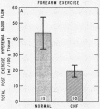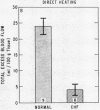Abstract
The objective of this investigation was to characterize the mechanism of peripheral vasoconstriction observed in heart failure and to determine whether it can be attributed to the augmented sympathetic nervous activity, characteristic of this state. The response of the resistance bed in the forearm after release of inflow occlusion (reactive hyperemia), to hand exercise, and to local heating and the response of the calf resistance vessels to arterial occlusion and intra-arterial sodium nitrite and phentolamine were studied in 23 patients with congestive heart failure and 21 normal subjects. In the normal subjects, reactive hyperemia blood flow after varying periods of arterial occlusion greatly exceeded the values observed in patients with heart failure. Local anesthetic blockade and intra-arterial phentolamine did not significantly alter the reactive hyperemia response in heart failure patients, militating against the possibility that increased sympathetic vasoconstrictor activity is responsible for the reduction of this response. Following compensation, the reactive hyperemia response returned toward normal. The striking elevations of the forearm blood flow observed after hand exercise and heating of the forearm in normal subjects were also markedly attenuated in patients with heart failure. Following intra-arterial phentolamine and/or sodium nitrite, peak calf blood flow was still significantly reduced in heart failure.
These observations indicate that (1) heart failure is characterized by a striking reduction in the response to a variety of endogenous and exogenous vasodilator stimuli; (2) circulating catecholamines and sympathetic vasoconstrictor activity are not solely responsible for the elevation of peripheral vascular resistance and the reduced response to vasodilator stimuli in heart failure; and (3) heart failure may increase systemic vascular resistance directly by altering the mechanical properties and reducing the dilating ability of the resistance vessels.
Full text
PDF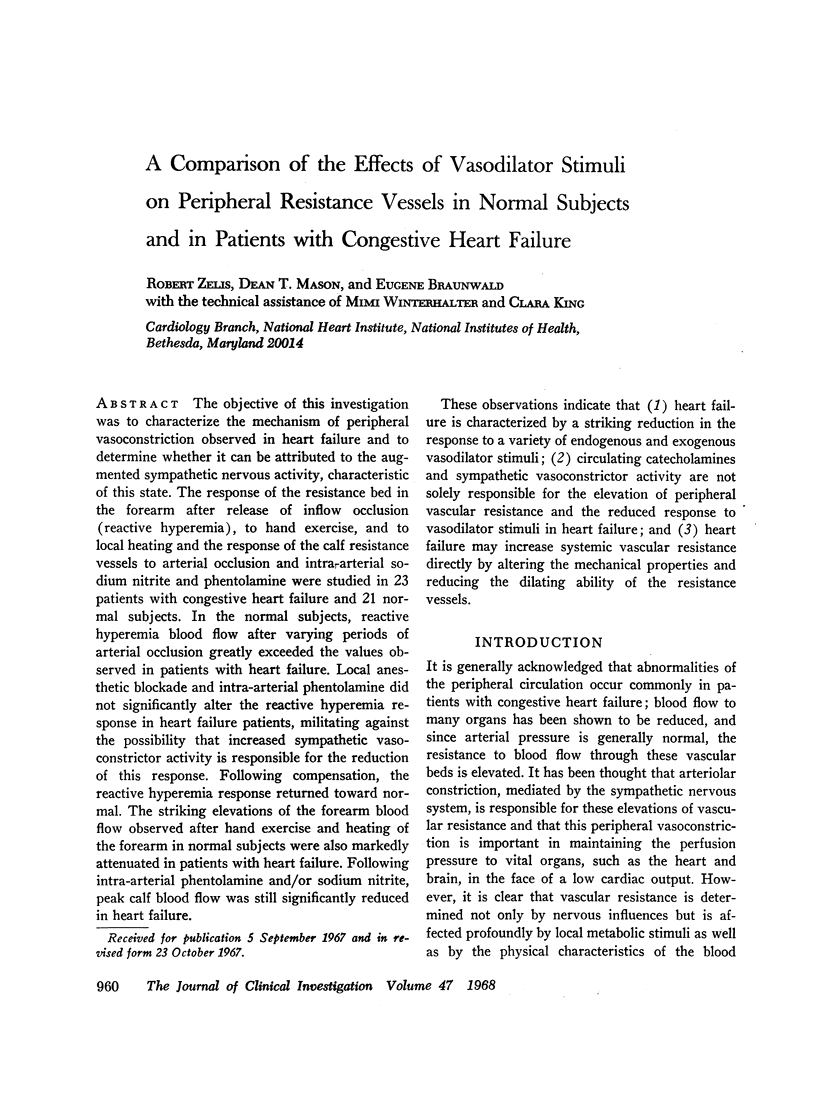
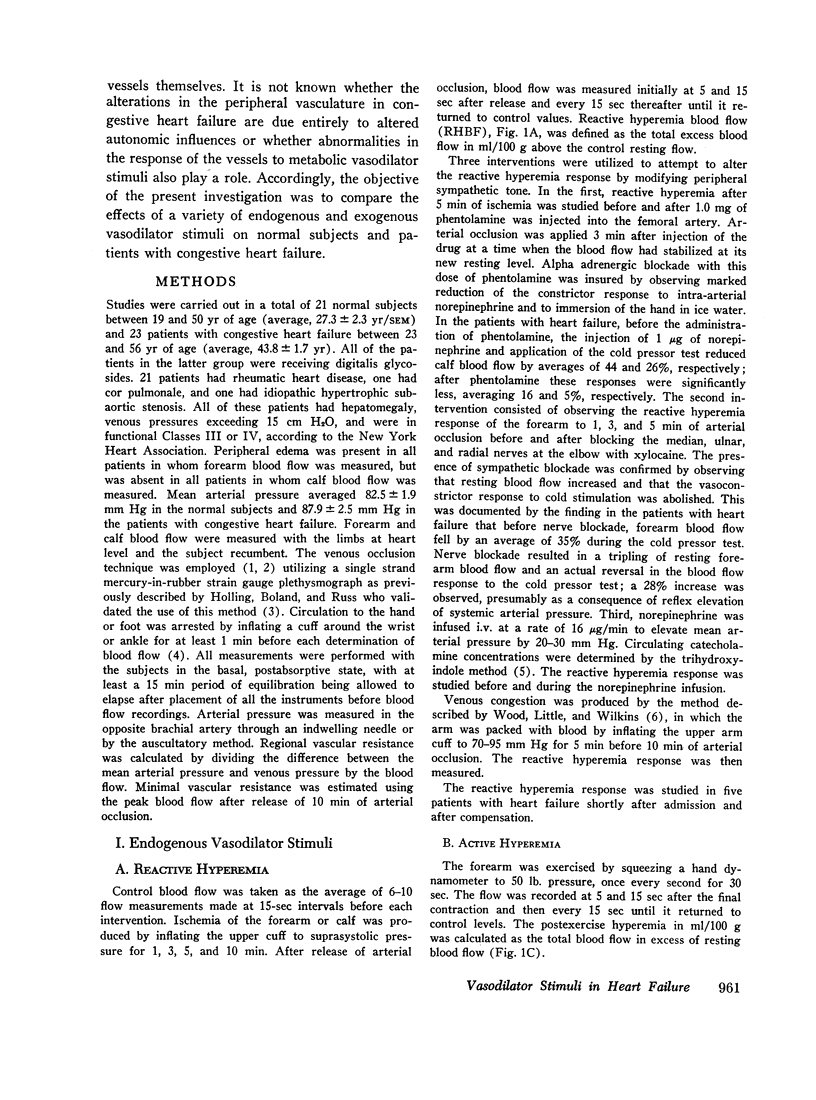
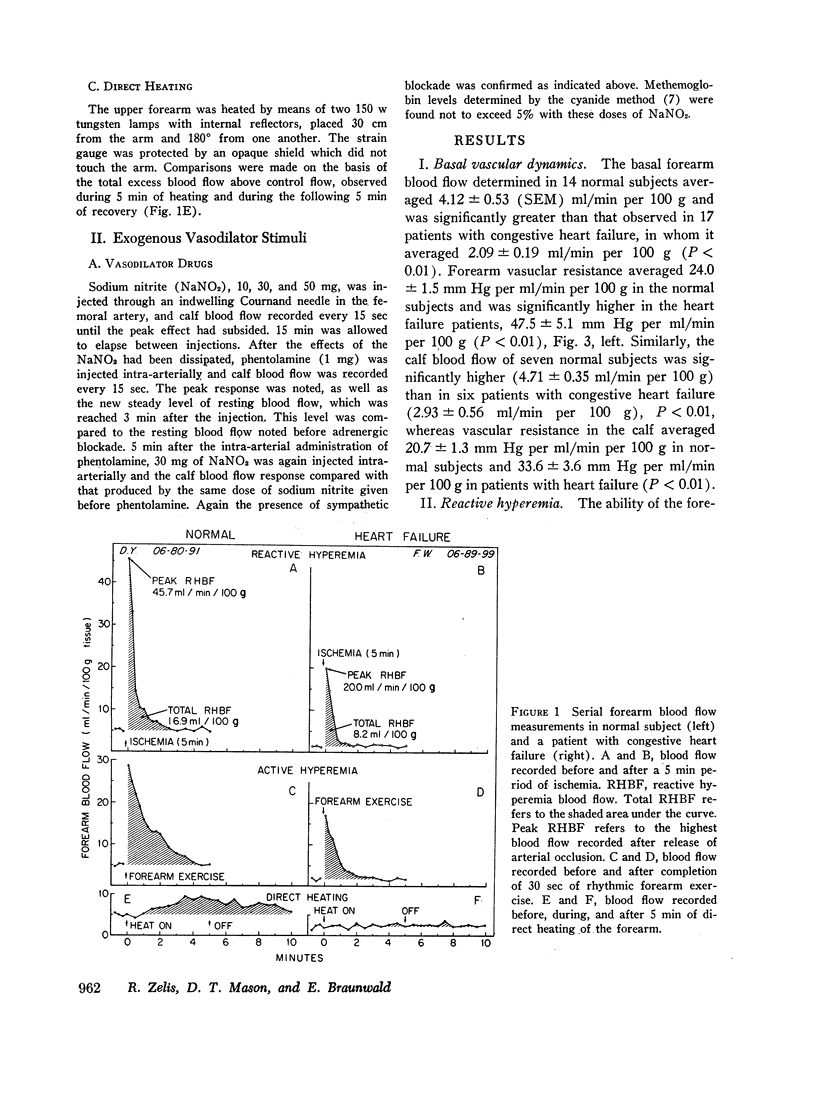
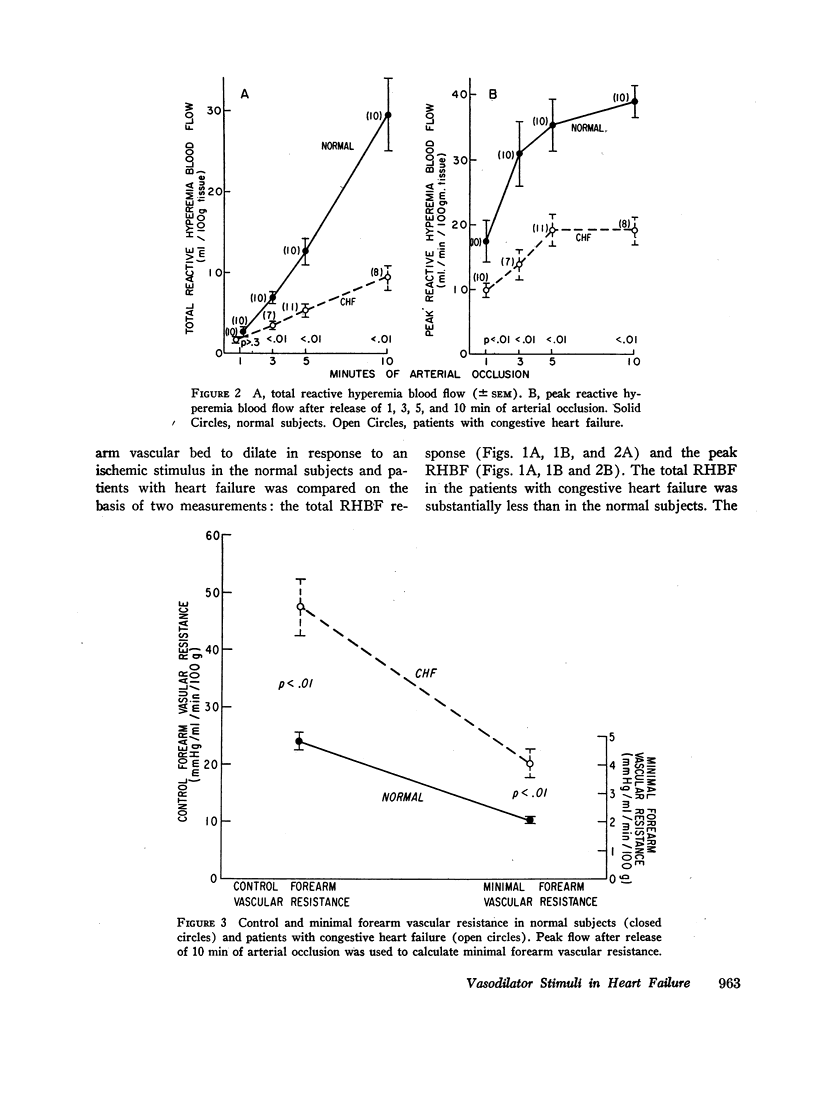
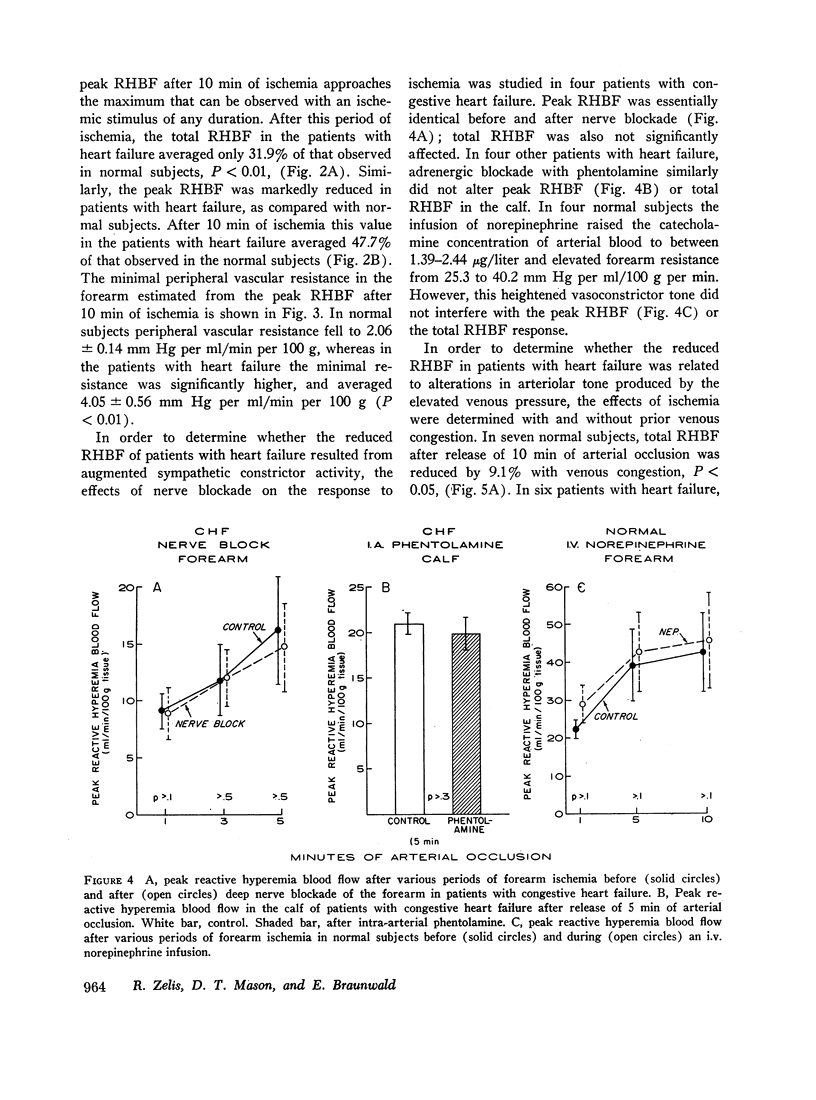
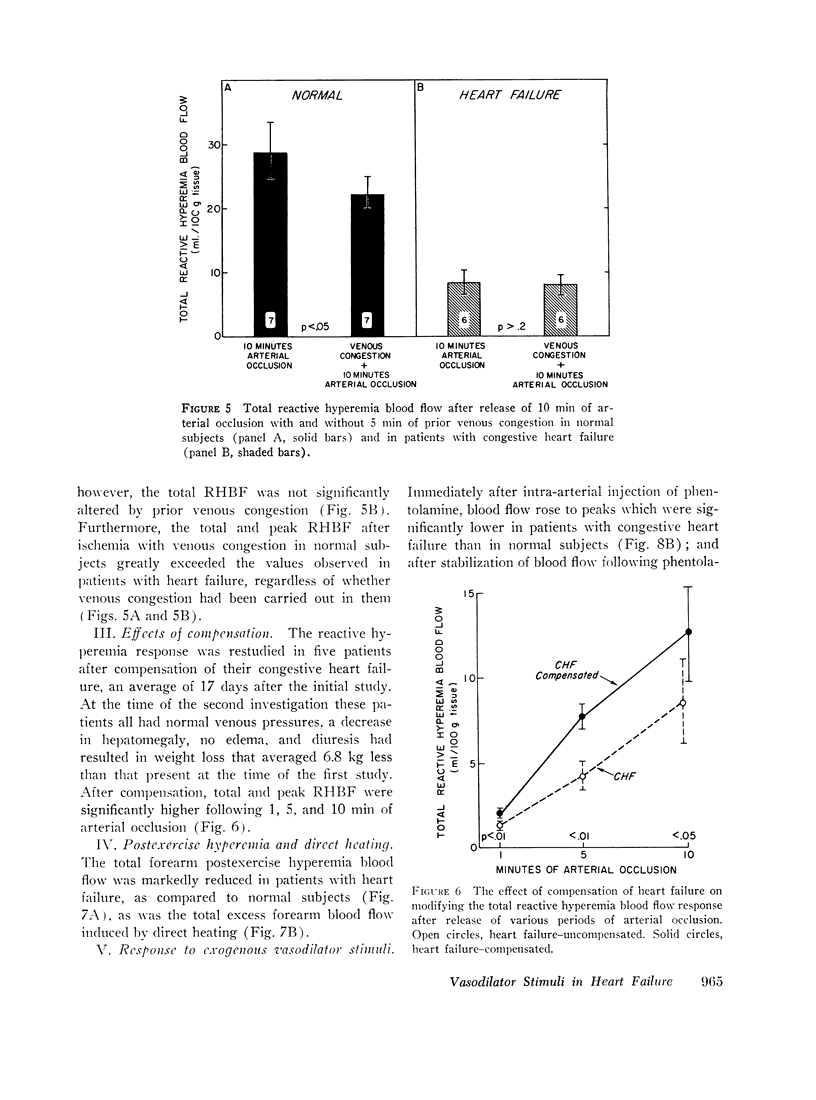
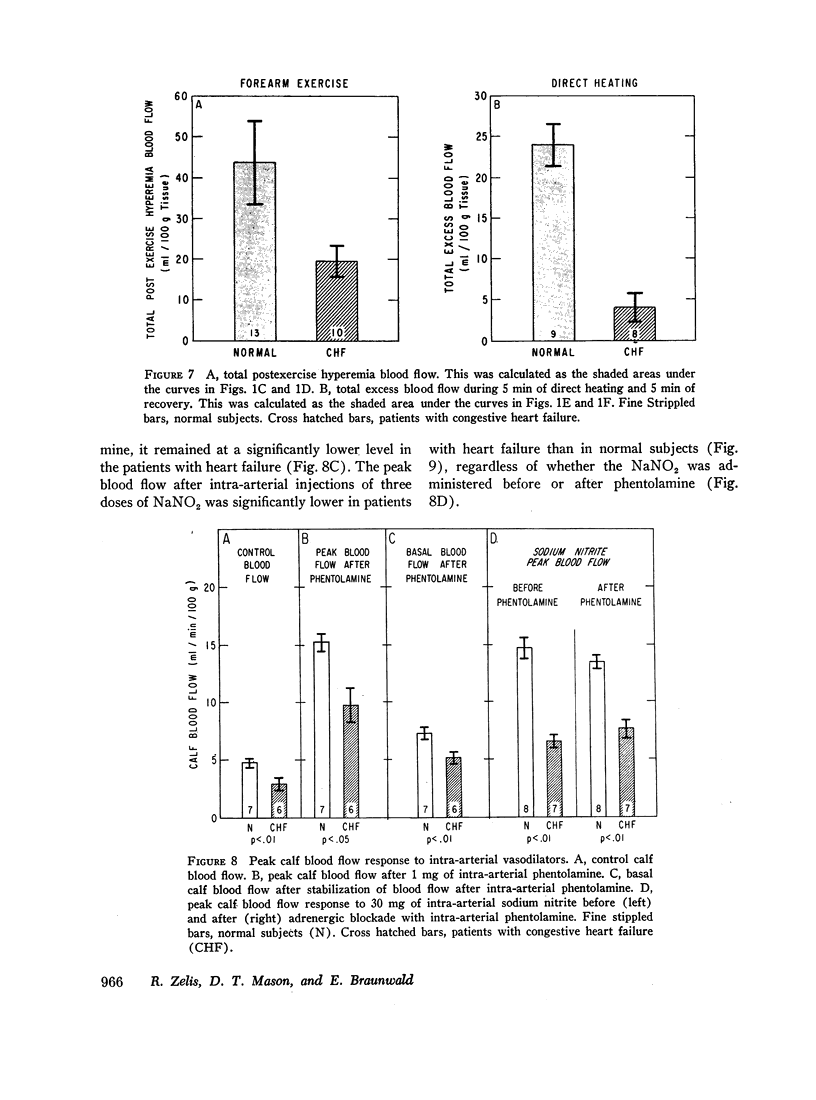
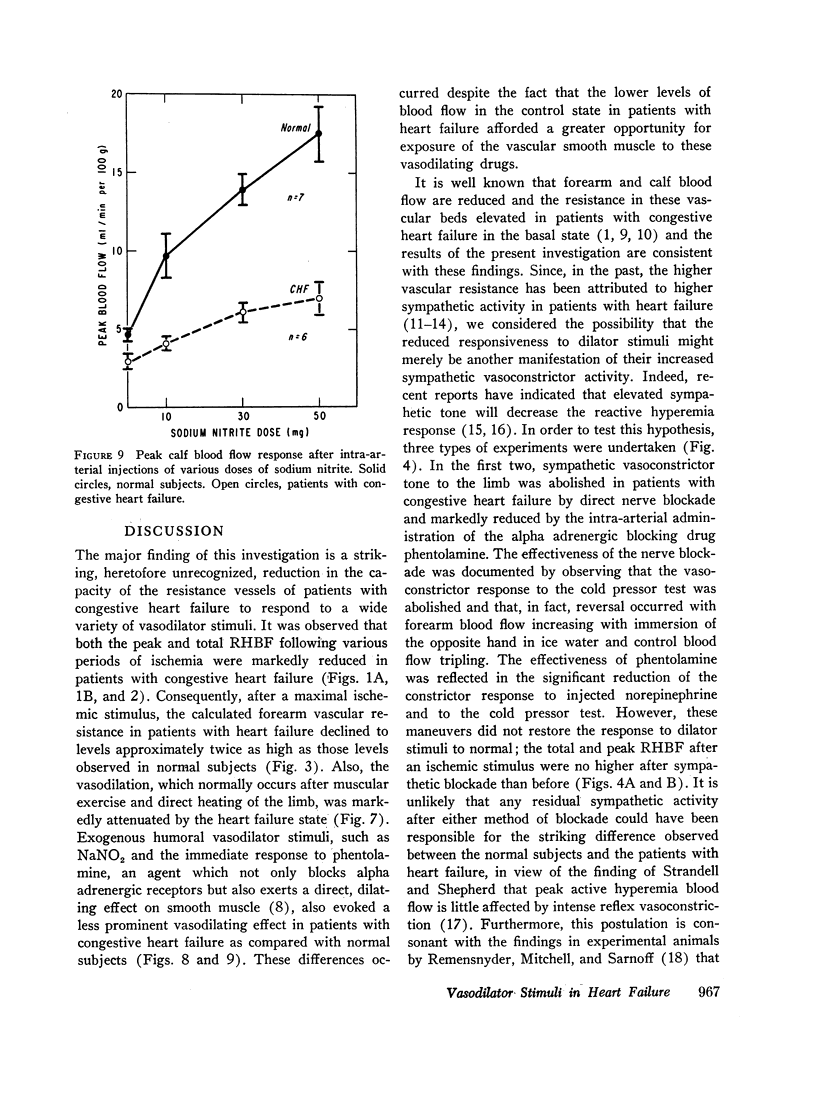
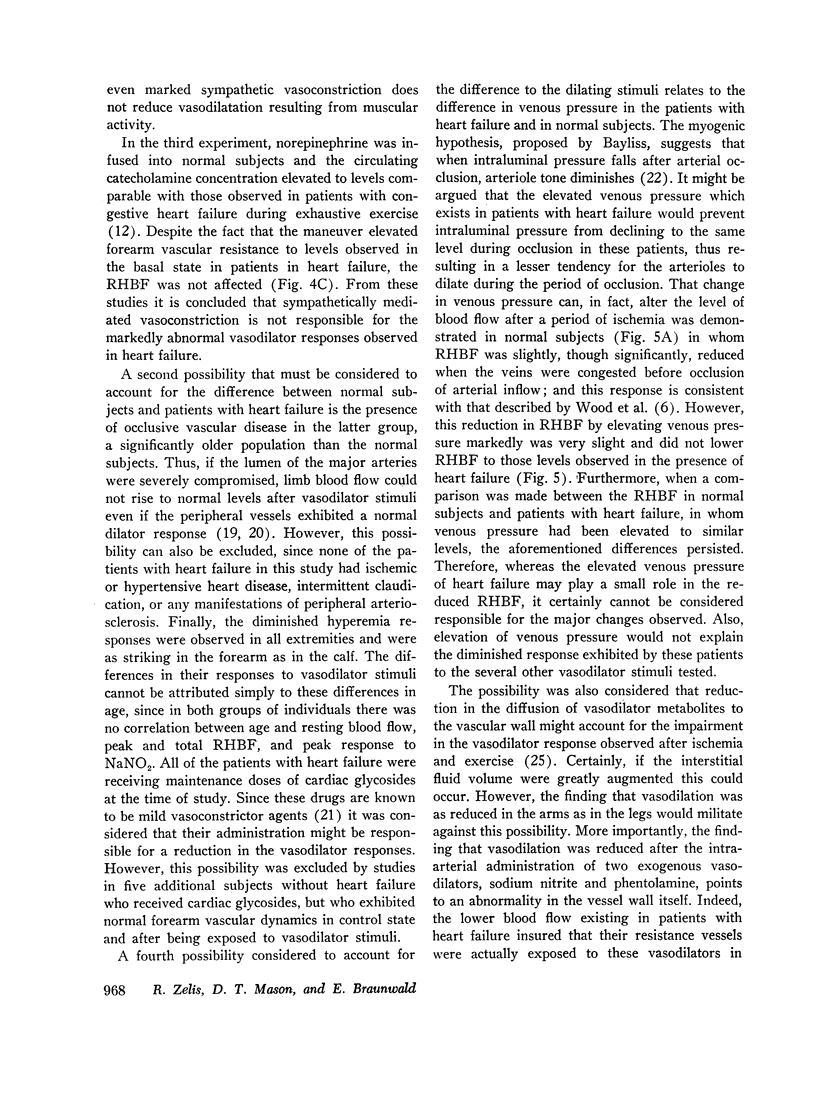
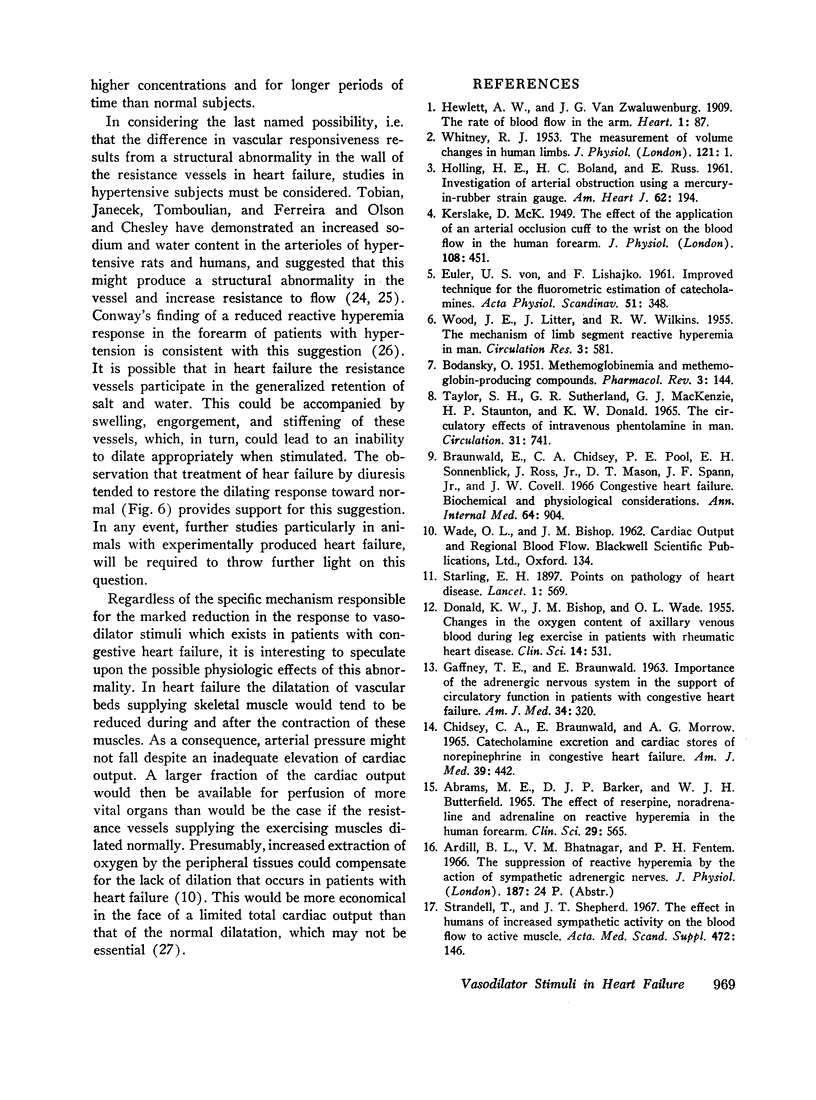
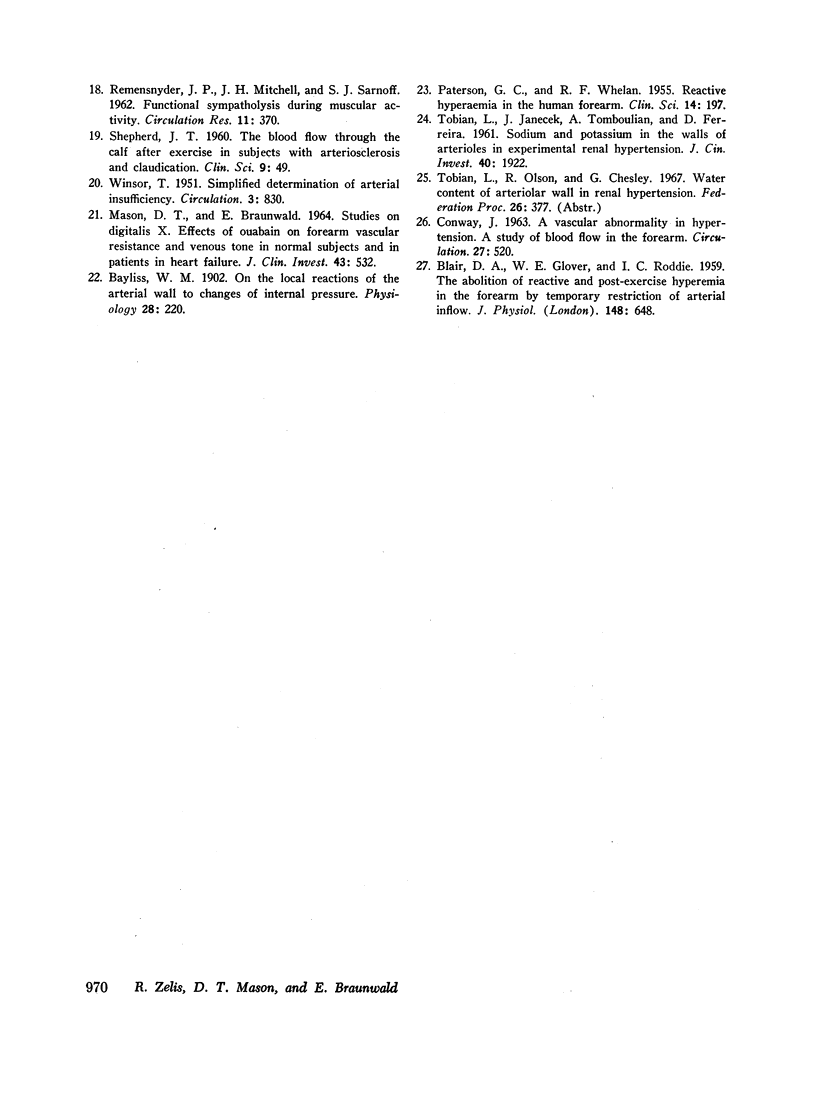
Images in this article
Selected References
These references are in PubMed. This may not be the complete list of references from this article.
- Abrams M. E., Barker D. J., Butterfield W. J. The effect of reserpine, noradrenaline and adrenaline on reactive hyperaemia in the human forearm. Clin Sci. 1965 Dec;29(3):565–574. [PubMed] [Google Scholar]
- BLAIR D. A., GLOVER W. E., RODDIE I. C. The abolition of reactive and post-exercise hyperaemia in the forearm by temporary restriction of arterial inflow. J Physiol. 1959 Oct;148:648–658. doi: 10.1113/jphysiol.1959.sp006313. [DOI] [PMC free article] [PubMed] [Google Scholar]
- BODANSKY O. Methemoglobinemia and methemoglobin-producing compounds. Pharmacol Rev. 1951 Jun;3(2):144–196. [PubMed] [Google Scholar]
- Bayliss W. M. On the local reactions of the arterial wall to changes of internal pressure. J Physiol. 1902 May 28;28(3):220–231. doi: 10.1113/jphysiol.1902.sp000911. [DOI] [PMC free article] [PubMed] [Google Scholar]
- CHIDSEY C. A., BRAUNWALD E., MORROW A. G. CATECHOLAMINE EXCRETION AND CARDIAC STORES OF NOREPINEPHRINE IN CONGESTIVE HEART FAILURE. Am J Med. 1965 Sep;39:442–451. doi: 10.1016/0002-9343(65)90211-1. [DOI] [PubMed] [Google Scholar]
- CONWAY J. A vascular abnormality in hypertension. A study of blood flow in the forearm. Circulation. 1963 Apr;27(4 Pt 1):520–529. doi: 10.1161/01.cir.27.4.520. [DOI] [PubMed] [Google Scholar]
- DONALD K. W., BISHOP J. M., WADE O. L. Changes in the oxygen content of axillary venous blood during leg exercise in patients with rheumatic heart disease. Clin Sci. 1955 Aug;14(3):531–551. [PubMed] [Google Scholar]
- GAFFNEY T. E., BRAUNWALD E. Importance of the adrenergic nervous system in the support of circulatory function in patients with congestive heart failure. Am J Med. 1963 Mar;34:320–324. doi: 10.1016/0002-9343(63)90118-9. [DOI] [PubMed] [Google Scholar]
- HOLLING H. E., BOLAND H. C., RUSS E. Investigation of arterial obstruction using a mercury-in-rubber strain gauge. Am Heart J. 1961 Aug;62:194–205. doi: 10.1016/0002-8703(61)90318-0. [DOI] [PubMed] [Google Scholar]
- Kerslake D. M. The effect of the application of an arterial occlusion cuff to the wrist on the blood flow in the human forearm. J Physiol. 1949 Jun 15;108(4):451–457. doi: 10.1113/jphysiol.1949.sp004348. [DOI] [PMC free article] [PubMed] [Google Scholar]
- MASON D. T., BRAUNWALD E. STUDIES ON DIGITALIS. X. EFFECTS OF OUABAIN ON FOREARM VASCULAR RESISTANCE AND VENOUS TONE IN NORMAL SUBJECTS AND IN PATIENTS IN HEART FAILURE. J Clin Invest. 1964 Mar;43:532–543. doi: 10.1172/JCI104939. [DOI] [PMC free article] [PubMed] [Google Scholar]
- PATTERSON G. C., WHELAN R. F. Reactive hyperaemia in the human forearm. Clin Sci. 1955 May;14(2):197–211. [PubMed] [Google Scholar]
- REMENSNYDER J. P., MITCHELL J. H., SARNOFF S. J. Functional sympatholysis during muscular activity. Observations on influence of carotid sinus on oxygen uptake. Circ Res. 1962 Sep;11:370–380. doi: 10.1161/01.res.11.3.370. [DOI] [PubMed] [Google Scholar]
- Strandell T., Shepherd J. T. The effect in humans of increased sympathetic activity on the blood flow to active muscles. Acta Med Scand Suppl. 1967;472:146–167. doi: 10.1111/j.0954-6820.1967.tb12622.x. [DOI] [PubMed] [Google Scholar]
- TAYLOR S. H., SUTHERLAND G. R., MACKENZIE G. J., STAUNTON H. P., DONALD K. W. THE CIRCULATORY EFFECTS OF INTRAVENOUS PHENTOLAMINE IN MAN. Circulation. 1965 May;31:741–754. doi: 10.1161/01.cir.31.5.741. [DOI] [PubMed] [Google Scholar]
- TOBIAN L., JANECEK J., TOMBOULIAN A., FERREIRA D. Sodium and potassium in the walls of arterioles in experimental renal hypertension. J Clin Invest. 1961 Oct;40:1922–1925. doi: 10.1172/JCI104417. [DOI] [PMC free article] [PubMed] [Google Scholar]
- WINSOR T. Simplified determination of arterial insufficiency; plethysmographic observation of reactive hyperemia following fifteen minute arterial occlusion at the ankle. Circulation. 1951 Jun;3(6):830–836. doi: 10.1161/01.cir.3.6.830. [DOI] [PubMed] [Google Scholar]
- WOOD J. E., LITTER J., WILKINS R. W. The mechanism of limb segment reactive hyperemia in man. Circ Res. 1955 Nov;3(6):581–587. doi: 10.1161/01.res.3.6.581. [DOI] [PubMed] [Google Scholar]
- von EULER U., LISHAJKO F. Improved technique for the fluorimetric estimation of catecholamines. Acta Physiol Scand. 1961 Apr;51:348–355. doi: 10.1111/j.1748-1716.1961.tb02128.x. [DOI] [PubMed] [Google Scholar]



